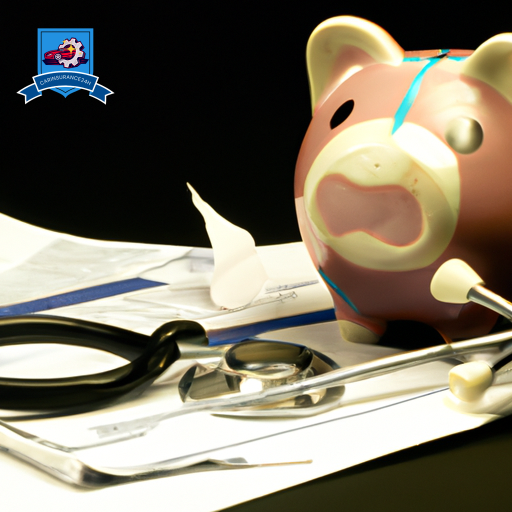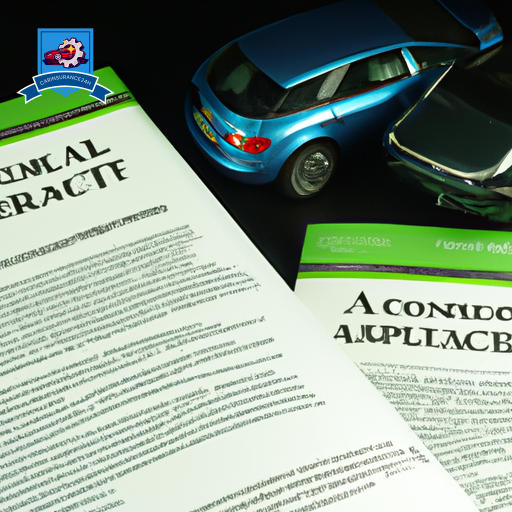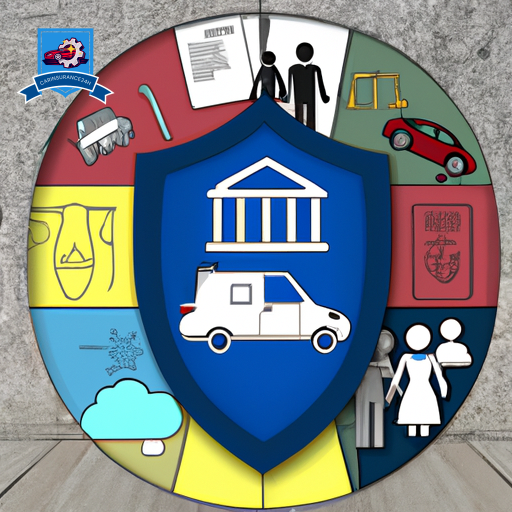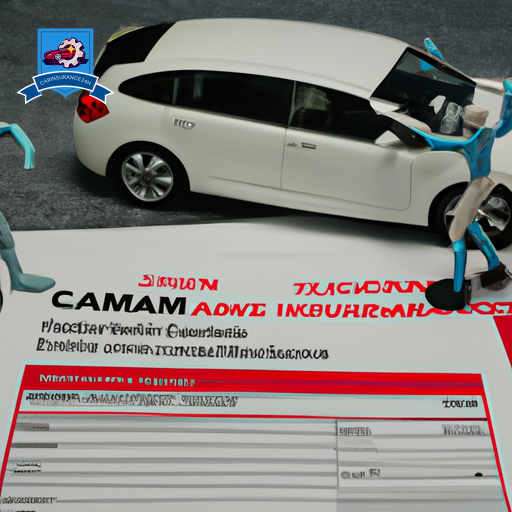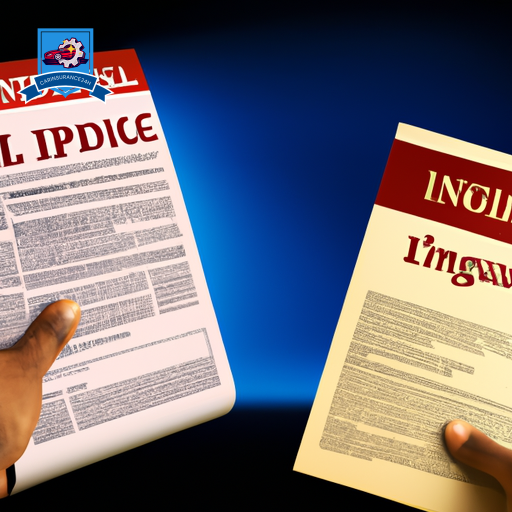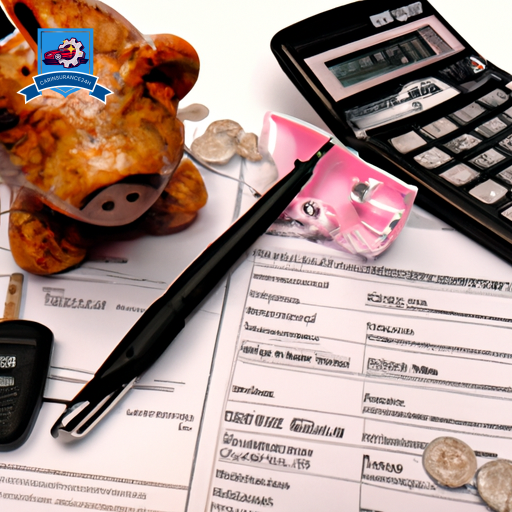Handling the aftermath of an accident can be challenging, especially when faced with the realization that your Personal Injury Protection (PIP) coverage may not suffice to cover the ensuing medical expenses and lost wages. This predicament raises critical questions about the adequacy of PIP limits and the avenues available for managing the financial shortfall.
Understanding your insurance policy’s specifics, alongside the costs incurred, is the first step in addressing this issue. However, the journey doesn’t end there. Exploring supplementary insurance options, considering legal recourse, and negotiating with healthcare providers present viable strategies to mitigate the financial strain.
The implications of insufficient PIP coverage extend beyond immediate financial concerns, prompting a need for a thorough strategy to handle the complexities that lie ahead.
Assessing Your PIP Limits

Understanding your Personal Injury Protection (PIP) limits is a critical first step in ensuring adequate coverage in the event of an automobile accident. PIP, a component of auto insurance policies in some states, covers medical expenses, lost wages, and other specified benefits regardless of who is at fault in an accident. However, the extent of this coverage can vary significantly between policies, necessitating a thorough assessment to avoid insufficiency in times of need.
First and foremost, policyholders must identify the maximum amount their PIP coverage provides for individual claims and the aggregate limit for all claims arising from a single accident. This foundational knowledge helps in gauging whether the existing coverage aligns with the policyholder’s potential needs and risks. Subsequently, understanding the scope of coverage is crucial. PIP generally covers the policyholder, family members living in the same household, and passengers who lack PIP coverage. However, nuances in how these terms are defined can drastically affect the coverage’s applicability following an accident.
In addition, policy upgrades play a significant role in bridging any gaps in coverage. Policyholders should explore options for increasing their PIP limits or supplementing their policy with additional medical payments coverage to enhance their protection. This proactive approach is particularly important for individuals with high-risk factors, such as those with long commutes or who frequently travel with multiple passengers.
Lastly, awareness of coverage exclusions is essential. Certain activities or circumstances might not be covered under a standard PIP policy, necessitating either careful consideration of these exclusions or seeking endorsements to mitigate these gaps.
Understanding Your Medical Bills
Following an assessment of your Personal Injury Protection (PIP) limits, it is important to examine your medical bills to make sure you fully understand the costs involved.
Evaluating medical costs meticulously allows you to identify discrepancies and makes certain that your insurance claims accurately reflect the care received.
This step is essential in steering insurance claims effectively, enabling you to advocate for fair compensation with precision.
Evaluating Medical Costs
Evaluating medical costs necessitates a thorough examination of your medical bills to guarantee accuracy and fairness in charges. This critical process ensures that you are only paying for the services you received and that any discrepancies are promptly addressed.
Understanding your medical bills can be complex, but it is an essential step in managing your healthcare expenses effectively. Here are key factors to consider:
-
Itemized Charges: Review each service listed for accuracy.
-
Insurance Adjustments: Understand how your coverage has been applied.
-
Emergency Funds: Consider how these can offset unexpected expenses.
-
Preventive Care: Recognize its role in potentially reducing future medical costs.
After examining the nuances of managing healthcare expenses through the evaluation of medical costs, it becomes imperative to navigate the complexities of insurance claims to further comprehend your medical bills.
Understanding the intricacies of claim denials and policy renewals are fundamental in mastering this navigation. When an insurance claim is denied, it is essential to promptly identify the reason behind the denial, whether it be due to procedural errors or discrepancies in the policy coverage.
Engaging in a thorough review of your insurance policy prior to renewals can also preemptively mitigate issues, ensuring that your coverage aligns with your healthcare needs. This strategic approach not only aids in managing medical bills more effectively but also in securing a smoother interaction with insurance entities, ultimately enhancing your financial and emotional well-being.
Exploring Additional Insurance
Considering the limitations of Personal Injury Protection (PIP) coverage, individuals often seek additional insurance options to secure thorough financial security in the event of an accident. PIP, while beneficial, often does not cover all expenses incurred due to an accident, leading to significant coverage gaps. Identifying these gaps, especially during policy renewal, is critical for ensuring comprehensive protection.
To enhance their coverage, policyholders may consider the following additional insurance options:
-
Bodily Injury Liability: This covers the costs associated with injuries to others for which you are legally responsible. It’s essential for protecting your financial assets in case you’re found at fault in an accident.
-
Uninsured/Underinsured Motorist Protection: This ensures you are covered if you’re involved in an accident with a driver who either lacks sufficient insurance or is uninsured. It can cover both bodily injury and, in some policies, property damage.
-
Medical Payments Coverage: Similar to PIP, this insurance can help pay for your medical expenses or those of your passengers, regardless of who is at fault. It’s a valuable addition for covering potential medical costs that exceed your PIP limits.
-
Collision and Comprehensive Coverage: While not directly related to personal injury, these coverages protect your vehicle from damages due to accidents, theft, vandalism, or natural disasters. They can be essential for ensuring you’re not left without transportation or with significant repair bills.
Exploring these additional insurance options can provide a more robust safety net, ensuring that you’re adequately protected against the financial impacts of unforeseen accidents.
Considering Legal Action
While exploring additional insurance options enhances financial protection against accidents, seeking legal advice may offer further safeguarding by guiding potential claims and compensation avenues. When personal injury protection (PIP) coverage proves insufficient, considering legal action becomes a viable next step. This approach requires understanding the prerequisites of filing a lawsuit and exploring avenues for alternative compensations.
To start, recognizing lawsuit prerequisites is essential. This involves confirming that the case meets the legal criteria for negligence or liability beyond the scope of PIP coverage. Typically, demonstrating that the injuries sustained are severe, permanent, or have led to significant financial loss is necessary. Legal counsel can assess the specifics of an incident to determine if these criteria are met, guiding the injured party through the complexities of proving fault and establishing the extent of damages.
Exploring alternative compensations is another critical aspect. This might include seeking damages for pain and suffering, loss of earnings, and other non-economic losses not covered by PIP. Legal professionals can identify potential sources of compensation, such as at-fault parties’ insurance policies or third-party contributions to the accident. Additionally, they can negotiate on behalf of the injured party to make sure a fair settlement that reflects the full extent of their losses.
Negotiating With Providers
In the domain of personal injury protection coverage, negotiating with providers stands as a pivotal step towards securing adequate compensation for one’s injuries. When the limits of one’s personal injury protection coverage are exhausted, direct negotiation with healthcare providers can offer a viable path to reduce outstanding medical costs. This proactive approach can make a significant difference in managing the financial burden of recovery.
To effectively engage in negotiations with providers, consider the following strategies:
-
Identify Billing Errors: Start by thoroughly reviewing all medical bills for inaccuracies. Common errors include charges for services not received or double billing. Rectifying these mistakes can lead to immediate decreases in the total amount owed.
-
Request Provider Discounts: Many healthcare providers are open to offering discounts, especially when services are paid for out-of-pocket. Don’t hesitate to ask for reduced rates; even a small percentage off can result in substantial savings.
-
Explain Your Financial Situation: Being transparent about your financial constraints can sometimes persuade providers to adjust your bills. Providers may offer a more manageable payment plan or further discounts to accommodate your situation.
-
Seek Assistance from a Medical Billing Advocate: If negotiations become too complex or overwhelming, consider hiring a professional advocate. These experts understand the intricacies of medical billing and can often negotiate more effectively on your behalf.
Negotiating with providers requires persistence and a clear understanding of your financial position. By applying these tactics, you stand a better chance of reducing your medical expenses and alleviating some of the financial pressures associated with recovery.
Seeking External Funding Sources
When Personal Injury Protection (PIP) coverage proves insufficient, individuals often find themselves exploring alternative funding mechanisms to cover medical expenses.
Crowdfunding has emerged as a viable option, leveraging the power of social networks to gather financial support.
Additionally, legal settlement advances provide a method to access future settlement funds, offering immediate financial relief in pressing circumstances.
Crowdfunding Medical Expenses
Facing the limitations of personal injury protection coverage, many individuals turn to crowdfunding as a viable alternative for securing the necessary medical funds. Crowdfunding involves gathering financial contributions from a wide audience, typically through online platforms. This method leverages the power of social media and charity platforms to spread awareness and encourage donations.
- Social Media Campaigns: Utilizing platforms like Facebook and Twitter to share personal stories and garner support.
- Charity Platforms: Websites specifically designed for fundraising, such as GoFundMe, provide a structured way to collect donations.
- Community Engagement: Local community groups often support through shares and donations.
- Update Mechanism: Regular updates to donors help maintain interest and encourage further sharing, thus amplifying the campaign’s reach.
Crowdfunding has emerged as a critical tool for those whose insurance falls short, offering a pathway to much-needed financial relief.
Legal Settlement Advances
For individuals with insufficient personal injury protection coverage, legal settlement advances offer an important alternative funding source by providing immediate financial support during legal proceedings.
These advances, basically loans against the anticipated settlement or judgment, allow plaintiffs to manage living expenses and medical bills while their case is pending.
However, it’s important to understand the financial implications, especially the interest rates and repayment terms associated with such advances. Typically, these rates can be considerably higher than conventional loans, reflecting the risk lenders undertake without a guarantee of case success.
Additionally, repayment terms are contingent upon the settlement’s conclusion, meaning if the case is lost, the borrower might not be obligated to repay the advance, depending on the agreement’s specifics.
Evaluating Long-term Impacts
Understanding the long-term impacts of personal injury protection coverage insufficiency necessitates a thorough evaluation of both immediate and prolonged financial, physical, and psychological consequences experienced by affected individuals. These impacts can alter one’s quality of life and require substantial adjustments. Key areas of concern include:
-
Lifestyle Adjustments: The financial strain from inadequate coverage often forces lifestyle changes to accommodate for reduced income and increased medical expenses. This can include downsizing living arrangements, modifying daily routines to manage pain or disability, and foregoing previous recreational activities or hobbies that are no longer feasible.
-
Employment Challenges: Sustaining an injury can lead to prolonged absences from work or, in severe cases, permanent disability that prevents a return to one’s previous employment. The shift to different, potentially lower-paying, work or the struggle to find employment that accommodates a new set of physical limitations poses a significant challenge.
-
Long-term Medical Care: Injuries may require ongoing treatment, rehabilitation, or surgeries, leading to a continuous financial burden. The initial coverage may fall short in addressing the full spectrum of medical care needed over time.
-
Psychological Effects: Beyond the physical and financial toll, the stress, anxiety, and potential depression stemming from managing chronic pain, finding financial instability, and coping with life changes can profoundly affect one’s mental health and well-being.
Evaluating these long-term impacts highlights the critical need for adequate personal injury protection coverage. Without it, individuals face a challenging path towards recovery and adjustment, underscoring the importance of thorough coverage evaluation and planning.
Planning Next Steps
Recognizing the profound challenges highlighted, initiating a strategic plan for the next steps is crucial for individuals grappling with the insufficiencies of personal injury protection coverage. The first pivotal step involves a thorough evaluation of the recovery timeline. This entails consulting with medical professionals to understand the expected duration and stages of recovery. Accurate knowledge of this timeline is indispensable, as it not only informs the planning of medical treatments and rehabilitation but also assists in forecasting the financial needs that extend beyond the coverage limits.
Simultaneously, securing emotional support is equally crucial. The aftermath of accidents can be psychologically taxing, necessitating a robust support system. This could involve seeking professional counseling services or joining support groups where shared experiences foster a sense of community and resilience. Emotional well-being is a cornerstone of a holistic recovery, and its importance cannot be overstated in the context of overcoming the challenges posed by inadequate personal injury protection coverage.
Moreover, exploring alternative financial resources becomes imperative. This may include delving into personal savings, considering loans, or investigating supplementary insurance options. It is also advisable to consult with a legal expert specializing in personal injury claims. Legal counsel can provide invaluable guidance on potential compensation avenues, including pursuing claims against at-fault parties or exploring settlement options that might not have been initially apparent.
Frequently Asked Questions
How Do I Determine if Other Parties Involved in the Accident Have Insurance Policies That Can Cover My Excess Medical Costs?
To determine if other parties have insurance policies covering excess medical costs, initiate a Liability Investigation and Coverage Verification process. This structured approach guarantees a precise evaluation of available resources, aiding in logical decision-making.
Can My Health Insurance Cover the Remaining Costs if My Personal Injury Protection (Pip) Is Not Enough?
Yes, health insurance can cover remaining costs when Personal Injury Protection (PIP) is insufficient, subject to coverage limits and health deductibles. It’s important to review your health policy to understand the extent of coverage provided.
Are There Any Non-Profit Organizations or Government Programs That Assist Individuals Who Exceed Their PIP Coverage?
Yes, individuals who exceed their Personal Injury Protection (PIP) coverage may seek assistance from non-profit organizations and government programs. These entities often provide support through charity fundraising efforts and offer legal aid to navigate financial shortfalls.
How Does Exceeding My PIP Coverage Affect My Car Insurance Premiums in the Future?
Exceeding your Personal Injury Protection (PIP) coverage may influence future premium calculations and coverage renewal terms. Insurers may adjust rates based on claims history, potentially leading to increased premiums for policyholders with exceeded coverage limits.
If I’m at Fault in the Accident, What Options Do I Have to Cover the Costs Exceeding My PIP Limits?
If found at fault in an accident, securing legal representation is important. Fault determination guides the process. Exploring additional insurance or assets to cover costs beyond PIP limits becomes essential in managing financial responsibilities efficiently.

